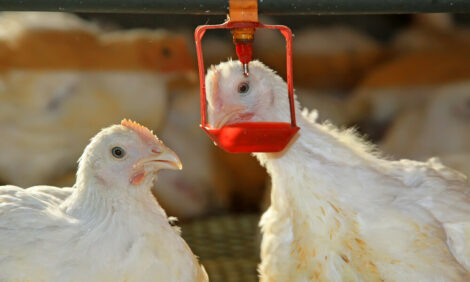



Mexico confirms avian influenza outbreak in backyard flock
Commercial production remains unaffectedMexico's National Service of Health, Safety and Agri-Food Quality (Senasica) confirmed the presence of highly pathogenic avian influenza H5N2 in a free-grazing family production unit in Huetamo, Michoacán, according to a government-issued press release.
The General Directorate of Animal Health (DGSA) of Senasica stressed that commercial poultry farming is not involved, explained that the virus was detected in an isolated area and there are no commercial poultry farms registered in at least 100 kilometers around, so the outbreak does not compromise the animal health status of our country.
This epidemiological event does not represent a risk to human health, since the virus is exclusive to birds, nor does it affect the supply of chicken and egg for the entire country, so an increase in the prices of these poultry products is not seen.
The agency of the Ministry of Agriculture and Rural Development reported that the doctors of the Directorate of the Mexico-United States Commission for the Prevention of Foot-and-mouth Diseases and Other Exotic Animal Diseases (CPA) of the DGSA began the investigation after a veterinary doctor reported the high mortality on a property that raised birds for self-consumption, in which, out of a total of 120 birds, 117 had died at the time of the report.
Faced with the finding, the DGSA immediately ordered the backspat unit to be quarantined and the CPA doctors applied the necessary counter-epidemic measures to deactivate the outbreak, such as cleaning, disinfection and the establishment of a period of sanitary vacuum.
The first RT-PCR molecular biology results issued by official laboratories confirmed the presence of an H5 avian influenza virus, later, through specialized tests, including viral isolation, primary genomic sequencing and intravenous pathogenicity index, it was confirmed that it was a highly pathogenic H5N2 avian influenza virus.
The specialists in the care of animal health emergencies of Agriculture, carry out the corresponding investigations in the area to determine the origin of the infection. The activities that are carried out in the field are perifocal tracing on the surrounding premises and promotion of the notification, in addition, a monitoring of wild birds that are near the affected site was implemented in order to determine the source of contagion.
At this time, the official laboratories of the DGSA are conducting deep genetic sequencing studies with the purpose of determining the possible origin of the virus.
Senasica urged poultry producers throughout the country not to lower their guard and strengthen biosecurity measures in their poultry production units, both family and commercial, in order to mitigate the risk of infections in domestic birds.
Learn more about avian influenza.










